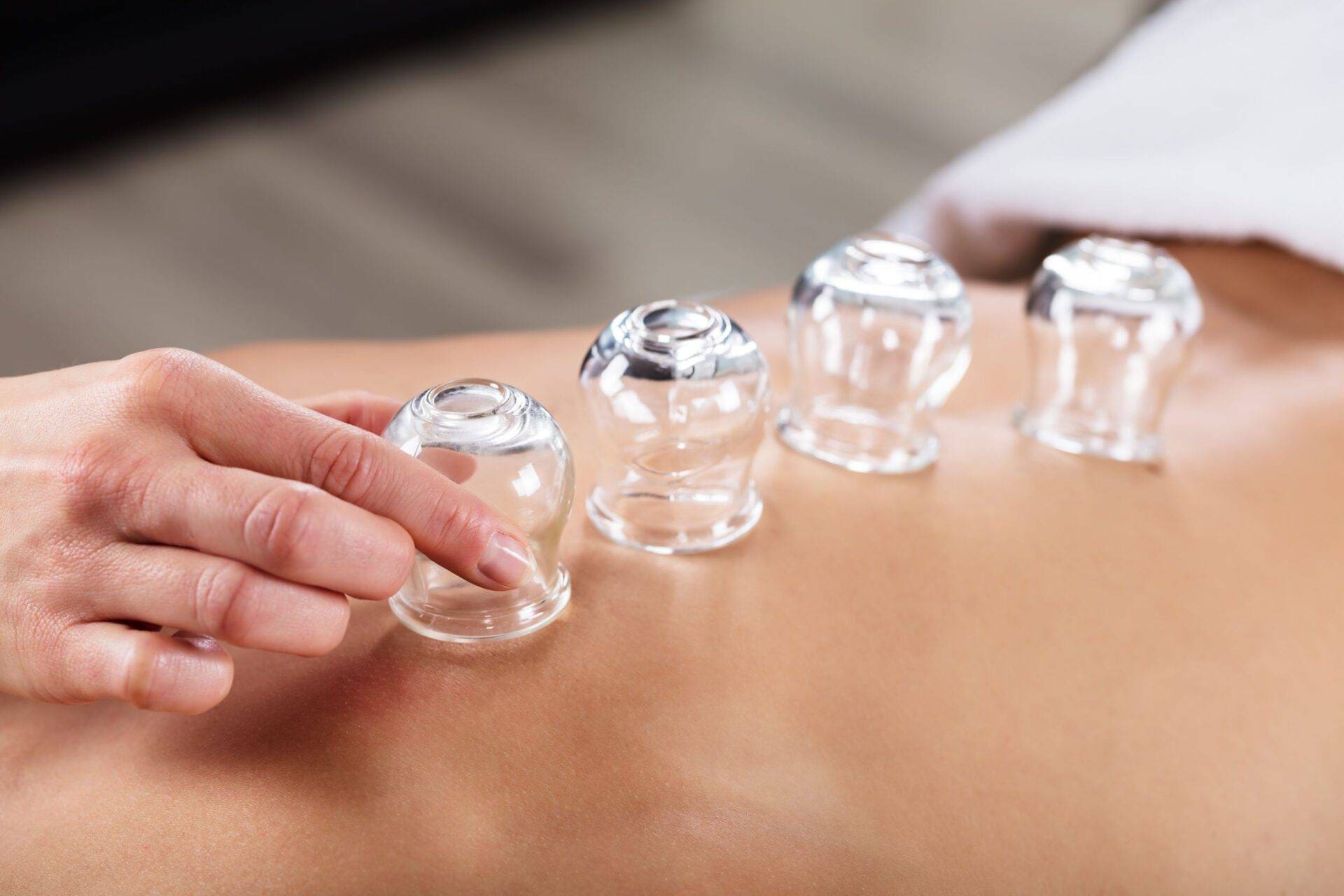By Alex MacPhee, RMT
2 Minute Read
In my clinical practice, I encounter a number of different problems in the muscles and other soft tissues with my patients. In order to address these problems effectively and quickly, I use a number of different treatment techniques that target these specific issues. Cupping Therapy is one of those treatment techniques. It is a form of treatment that includes applying specific cups on the patient’s skin to create a suction on the skin and the tissues underlying the skin. These special cups can be used in two ways – through stagnant cupping, where the cups are left in place, or through running cupping, where the cups are slid around the tissues in physiologically guided patterns.

How Does Cupping Work?
Cupping works by positioning the cups on specific areas of the body and either letting them stay in place for several seconds or minutes or gliding the cups around the body according to the tissues that require the therapy. The cups create a suction that helps increase blood flow to the surface of the skin which promotes improved oxygen supply and cell metabolism, leading to a reduction in inflammation. While gliding the cups, known as running cupping, a stretch is often achieved in the muscles typically when a stagnant cup is placed at either end of the muscle. Running cups can also break up adhesions in the fascia (the connective tissue that runs throughout the body) and scar tissue, which can further stimulate healing. Cupping typically focuses on targeting connective tissues such as fascia and fibrotic tissues such as scarring and has shown to decrease cellulite.
What Are The Benefits of Cupping Therapy?
Cupping therapy has a number of benefits, depending on the problems/changes that have occurred in the tissues, how long the problems have existed, and the goals of the patients and/or cupping provider. These benefits include:
- Reduction in scar tissue
- Reduces chronic pain
- Improves blood flow
- Enhances the speed of muscle recovery and the general healing process
- Improves joint mobility
- Reduces fascial tension
- Known to relieve migraine symptoms
- Aids in detoxifying skin and blood
- Is used to treat chronic pain from conditions like arthritis and fibromyalgia, as well as pain associated with physical injuries.

What Precautions Are in Place for Cupping Therapy?
- Cupping would be avoided if a patient is on anti-coagulants (blood thinners) or has suffered cardiac arrest in the last 6 months.
- Cupping would not be performed on the lower back past the first 6 months of pregnancy.
- Cupping would never be performed on the abdomen.
- Cupping would be avoided when skin-sensitivity conditions are present, such as Psoriasis, rashes, sunburns, Shingles, and skin lesions.
- Cupping may be avoided with certain systemic conditions, such as Diabetes, liver dysfunction, kidney dysfunction, Hemophilia, and severe edema (swelling).
Is Cupping Painful?
While cupping typically isn’t painful, it can be uncomfortable if there is a lot of restriction or tension within the tissues, particularly with running cupping. The suction associated with cupping causes localized expansion of tissues. Vasodilation, which is the opening of blood vessels, can cause some pain in areas that lack blood circulation. Although patients may occasionally experience this discomfort or pain during their cupping session, symptoms typically resolve relatively quickly following the treatment. Home care measures can help mitigate post-treatment discomforts, such as the application or heat and/or ice.

Are There Any Side-Effects Associated with Cupping?
Although there aren’t typically any significant negative side effects associated with cupping, there can be residual bruising that can last anywhere from a couple of days to two weeks. The bruising is usually not painful but can be sensitive to touch. For most people, it’s more of an aesthetic consideration if you plan on having that area of the body exposed. The healing process typically depends on the mobility of the area treated as well as if the tissue immobility has been resolved fully with treatment. It is important that patients drink ample amounts of water and avoid very strenuous activities for 24-48 hours after their cupping treatment.
If you are interested in trying Cupping Therapy or have any questions about this treatment option, please don’t hesitate to reach out to us! Our Registered Massage Therapist, Alex MacPhee would be happy to help you address your health concerns!

